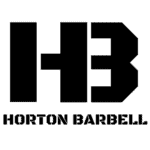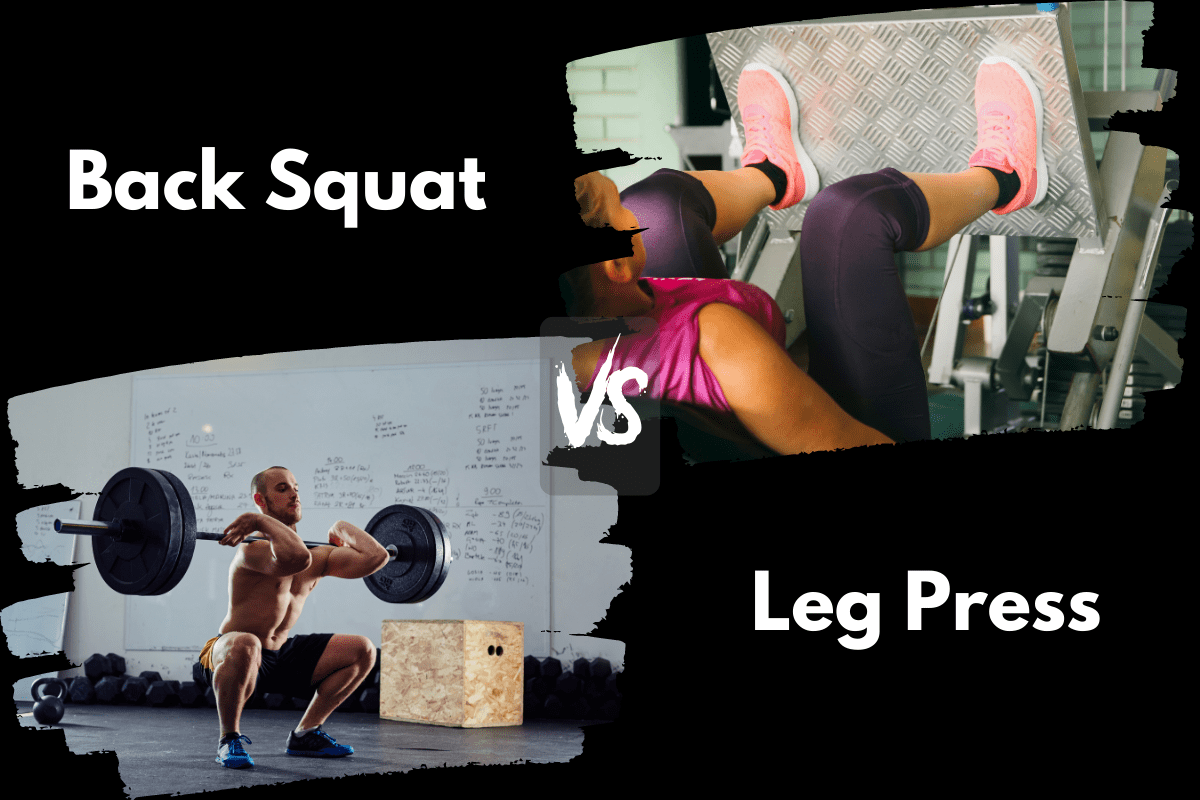Front Squat vs Leg Press (Which is Better?)
If you’re someone who loves to hit the gym and work on your lower body, you’re probably at least a little familiar with both Front Squats and Leg Press.
But which one is the better exercise for building strength and muscle mass?
In this article, I’ll be comparing Front Squats and Leg Press, looking at their benefits and drawbacks. I’ll also provide some tips on how to properly execute each exercise so you can get the most out of your workout.
Whether you’re a beginner or an experienced lifter, this post will have something for you. Let’s dive in and take a closer look at Front Squats vs Leg Press!
Front Squat

Equipment Needed
- Squat Rack
- Barbell
- Bumper or Iron Plates
- Lifting Straps (optional if needed)
Step-by-Step Instruction
- Set the height of the squat rack so that the barbell is about 1-2 inches below the flexed elbow (Elbow pointing toward the squat rack prior to taking the weight off the hooks).
- One of the first considerations you are going to want to make is what grip you want to use to perform the front squat.
- Later in the article, I will talk about different grips and the reasoning behind each grip.
- For now, I am going to assume you are using a two-finger clean grip. (Most commonly used by athletes).
- Walk closely to the barbell and place it very close to your neck.
- Bring your elbows up and the barbell should be resting on the raised anterior deltoid muscles. You are now holding the bar with what’s called a “front rack position” (THERE SHOULD BE NO STRESS OR TENSION ON THE HAND OR WRIST TO HOLD THE BARBELL).
- With your front rack, lift the bar off the hooks. I recommend a staggered stance to lift the barbell off the rack.
- Take 2 steps back and set your feet slightly wider than shoulder width. Toes slightly pointed out.
- Maintaining a strong front rack, take a deep breath, and brace the core.
- Initiate the squat by hinging the hips back and bending the knees simultaneously.
- Descend into the squat with control until your hip crease is slightly below the knee. (Most professionals consider this to be parallel or just below parallel).
- At this point, the core should be braced, the front rack strong, elbows up, and the lifter is ready to drive out of the “hole” and stand the weight back up.
- Keep a balanced foot with a strong arch, drive through the heels, and drive the hips until you are back at the top of the movement and ready for the next rep.
Grips
- Clean grip with 1 or 2 fingers. This is the most common grip used by Olympic lifters and athletes. This trains the specific position the bar would be in at the catch of a clean and therefore very advantageous for these athletes.
- Crossed arms. This is a common grip for athletes that want all the benefits from the front squat but may not have the flexibility or need for a finger grip.
- Lifting Straps. This allows the lifter to get the front rack position, engaging the upper back musculature, and takes a lot of stress off the fingers and wrists.
Coaching Points
By far the most common mistake with Front squatting (and most all compound movements) is improper form. Because the lift is very technical, uses the whole body, and requires patience and persistence, lifters oftentimes have incorrect form without realizing it, go up in weight too quickly, and may injure themselves.
Be patient with your flexibility. Persistence and working hard on your flexibility will pay off with front squatting. Remember to always warm up prior to any lifting session. Work on flexibility drills during warm-up sets as well. After your session, use cool-down techniques, foam roll, stretch, and hydrate.
In regards to your setup and form; treat every rep like it’s a 1 rep max. Put a tremendous amount of detail in your setup (Do it the exact same way, every rep). Make small gains in weight over time.
Benefits
Front Squats are a variation of the traditional back squat exercise. They have many of the same benefits, including building strength and power in the lower body and improving balance and coordination.
However, Front Squats have some additional benefits compared to back squats. Because the barbell is held in front of the body, front squats engage the core muscles more, helping to improve core stability and posture.
Front Squats can also help to improve mobility in the hips, ankles, and wrists.

Tired of coming up with your own workouts? But don’t want to pay an arm and a leg?
I post workouts 5 days a week right here. (Did I mention they’re free?)
Leg Press

Equipment Needed
- Leg Press Machine
How To / Coaching Points
Instructions on how to do Leg Presses are going to be extremely dependent on the machine itself. All Leg Press machines do not function in the same way. It’s actually quite the opposite. I would guess there are at least a dozen different designs that all work differently.
With that being said, instead of specific instructions, I’m going to give you some somewhat universal tips when it comes to Leg Press.
- If using a Leg Press Machine you’re unfamiliar with, always start with no weight on the machine.
- Make sure you know how to unrack and rack the safeties as well as do a full rep before adding weight to the machine.
- Go up in weight slowly. No need to make a big jump and get yourself pinned and potentially hurt.
- Do NOT overextend your knees. Learn how to fully extend your legs without locking out your knees.
Benefits
The main benefit of a Leg Press is that you can build leg strength without having to load weight on your back (axial load). This is extremely beneficial for anyone who may have back issues that prevent them from being able to Back Squat or even Front Squat.
Leg Press can also be beneficial for beginner lifters who are not yet comfortable with their Back Squat technique. I would rather have a beginner Leg Press safely rather than Back Squat with improper form.
Looking for more alternatives for Leg Press other than just Front Squat? Here are 10 of my favorite alternatives for Leg Press.
Front Squat vs Leg Press: Which is Better?
Now, let’s take a side-by-side look at both exercises to see if one is better than the other for a few common lifting goals.
Better For Developing Size and Strength: Front Squat
Not only is the Front Squat better than Leg Press for developing strength and muscle mass, but in my opinion, it’s one of the best exercises for building pure strength and size.
The Front Squat is a compound exercise that involves multiple joints and muscle groups, including the hips, knees, and ankles. It requires more coordination and stability than Leg Press, and recruits more muscle fibers, resulting in greater overall muscle activation and growth.
In contrast, the Leg Press is often done seated with the weight moving on a fixed plane. So, you miss many of the benefits that Front Squats provide for the core and stabilizer muscles.
Better For Beginners: Leg Press
There are a few reasons why the Leg Press may be considered better than Front Squats for beginners.
The Leg Press is generally easier to perform than the Front Squat, especially for those who are new to lifting. It involves less coordination and stability and does not require the use of a barbell, making it more accessible and user-friendly.
In contrast, the Front Squat requires proper technique and form to avoid injury, which can take longer for beginners to learn.
Don’t get me wrong, I believe beginners should learn proper Front Squat technique early on because Front Squats can provide so much value. But, I would rather a beginner Leg Press safely as opposed to Front Squatting with improper technique.

Get Shredded… For Free
Get a free workout Monday through Friday, posted right here on Horton Barbell. These workouts are designed to help you get strong, in shape and look great at the beach!
Final Thoughts
I’ve just spent the last section of this article comparing which is better – Front Squat vs Leg Press. I love Front Squats and believe they are one of the most beneficial exercises an athlete (and non-athletes) can do.
However, if you’re unable to squat because of a physical limitation or you’re not comfortable with your Front Squat technique then Leg Press can make a good substitute.
More Links and Info
Check out how Front Squat compares against some other popular lower-body exercises:

